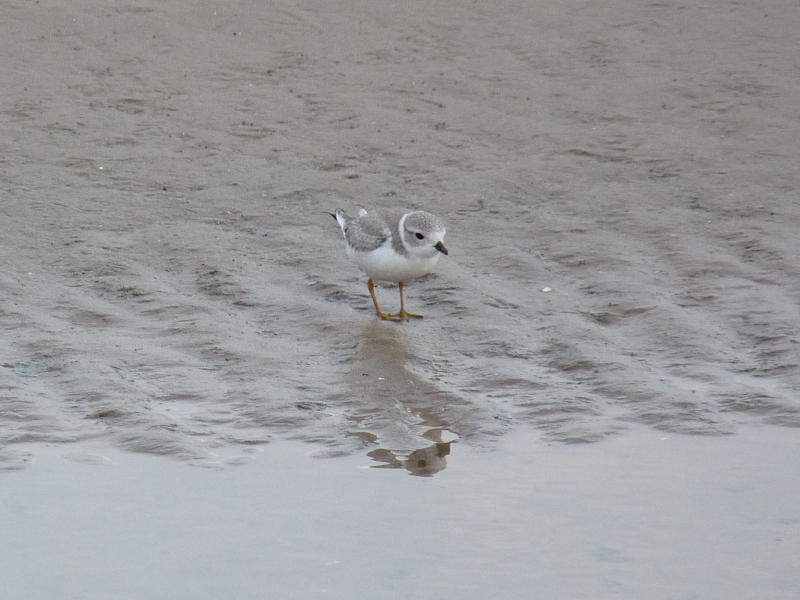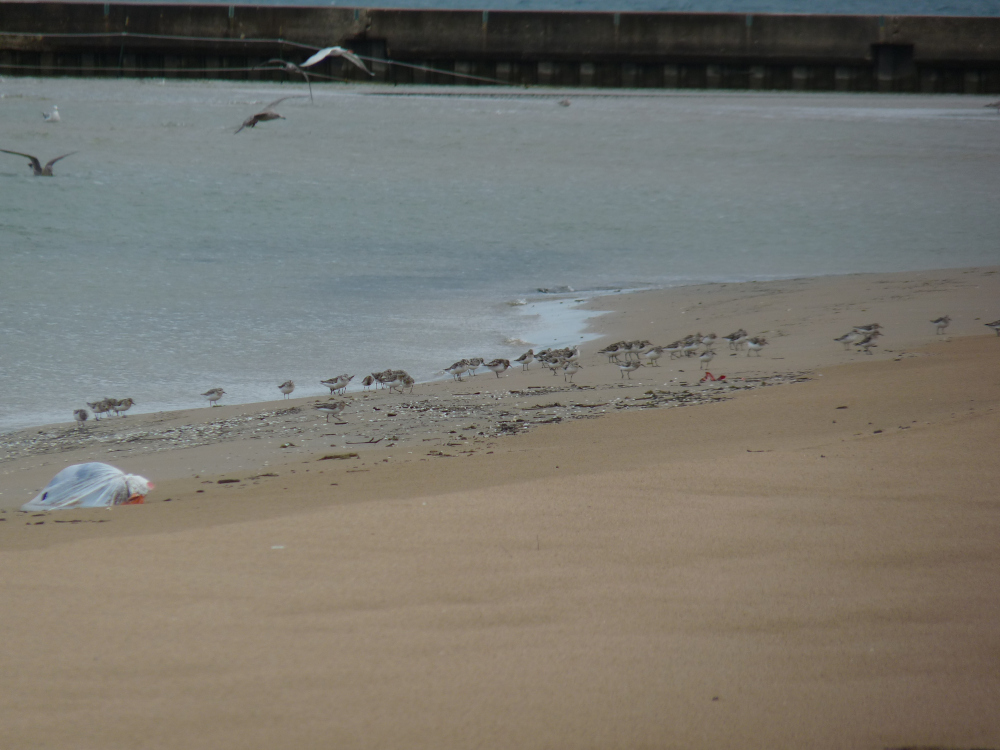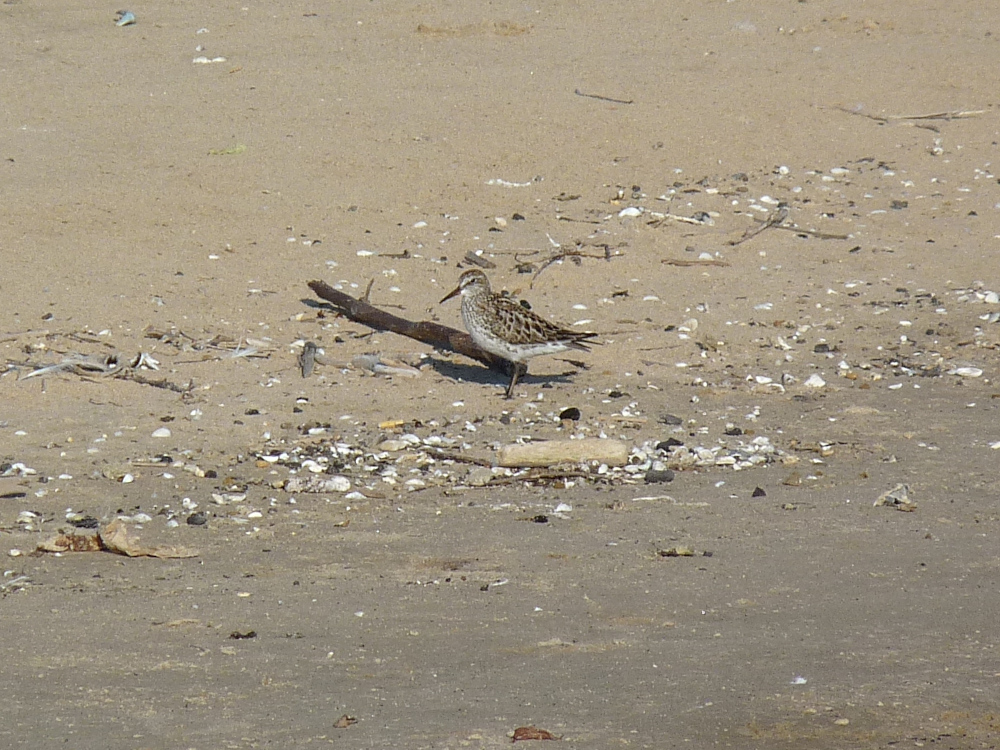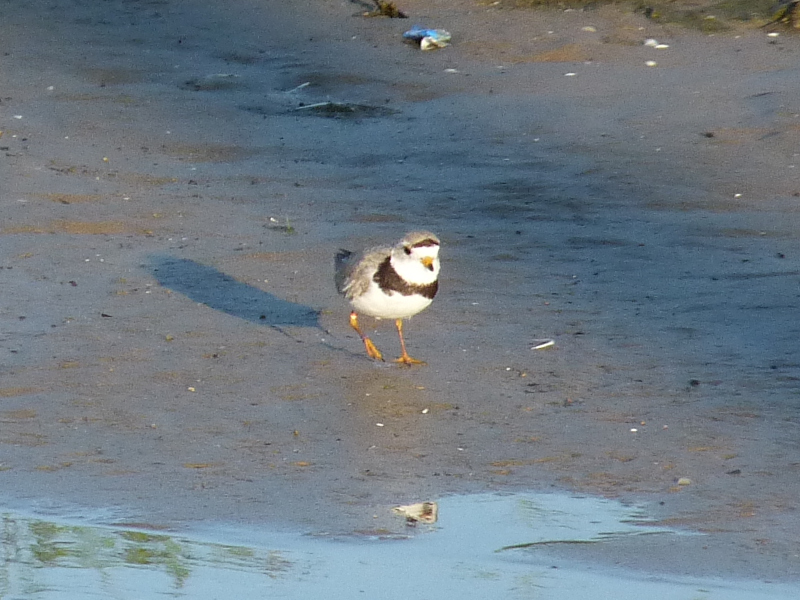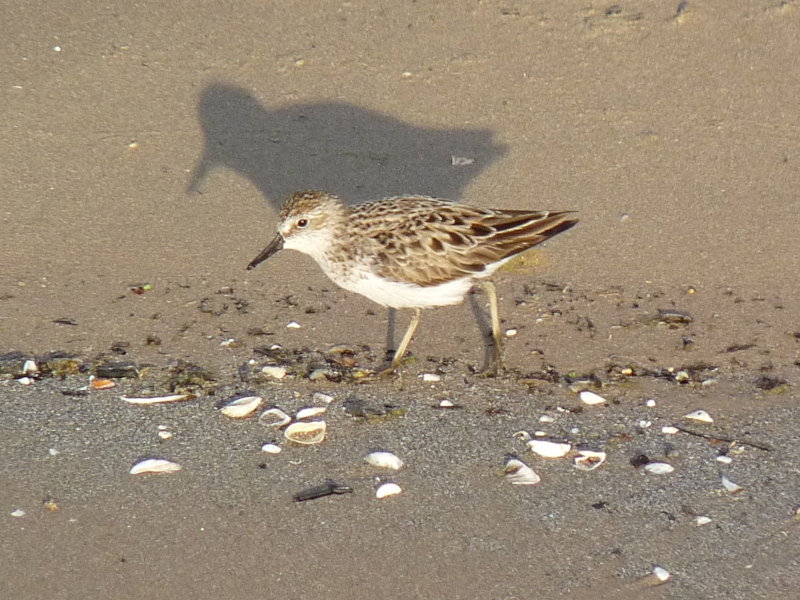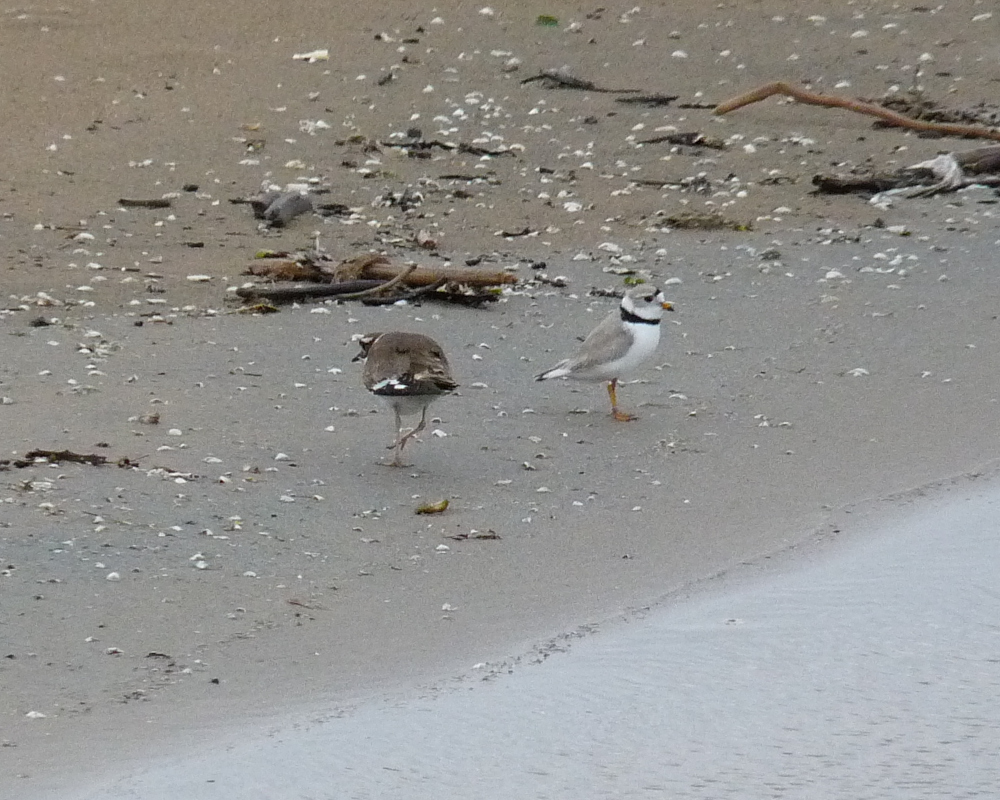A juvenile Piping Plover was at Montrose Beach on July 26 and 27. Montrose Beach is best known as the home of Monty and Rose, but it also hosts migrant Piping Plovers that are going to or coming from other parts of the Great Lakes and possibly the Great Plains. This Piping Plover was not banded, so where it came from is unknowable.
Tag Archives: Shorebirds
Shorebird Fallout, July 24, 2022
An impressive flight of shorebirds took place on the morning of July 24. These birds were probably grounded by the rain that lasted most of the early morning, and may have been moving ahead of an approaching cold front, as migrating summer shorebirds often do. My list includes
Semipalmated Plover – 1
Ruddy Turnstone – 3
Sanderling – 60
Least Sandpiper – 1
Pectoral Sandpiper – 2
Semipalmated Sandpiper – 16
Short-billed Dowitcher – 4
Lesser Yellowlegs – 3
Except for the Sanderlings, most of these birds didn’t stay long. This is typical summer shorebird behavior at Montrose. Link to my eBird checklist for the morning below.
eBird Checklist
July 24, 2022
July Weirdness – White-rumped Sandpiper and Hermit Thrush
We’re seeing the expected mid summer southbound migrant shorebirds like Least Sandpipers and Willets, but a White-rumped Sandpiper on July 3 was a surprise. Which way was this bird going? White-rumpeds are late spring migrants; we often see a few well into June but July birds are harder to interpret. I suspect this bird is a very tardy northbound migrant since we were seeing White-rumpeds in mid and late June, and we usually don’t get southbound birds until late August at the earliest.
Even more inexplicable was a Hermit Thrush near the Marovitz Golf Course. Hermit Thrushes are early spring and later fall migrants in northern Illinois. Most spring birds have moved on by early May and the first fall birds don’t start appearing before late September. In other words, Hermit Thrushes shouldn’t be in Chicago in July. Obviously this bird is confused.
eBird Checklist
July 3, 2022
Imani Update, June 27, 2022
Imani, the young male Piping Plover and son of Rose and Monty, was still at Montrose in late June. His behavior has changed dramatically however. In late May and early June we would often hear him calling before we saw him and his slow motion flight display over the Dunes was an aerodynamic sight to behold. He was feeling his oats and ready to start a family and carry on Monty and Rose’s lineage. By late June the displaying and aggressive behavior towards other birds had stopped. He became harder to find and even disappeared for a few days. A female Piping Plover never showed up, which is probably the reason for Imani’s more subdued behavior. How long he will stay at Montrose is uncertain. Without a mate and the potential for a family he doesn’t have much incentive to hang around. The good news is that Imani is young, only about a year old, and there’s always next year.
Semipalmated Sandpiper, June 17, 2022 – Last of the Last?
Here we are, two full weeks into June and we’re still getting a few late spring migrants at Montrose. Historically, Semipalmated Sandpipers are one of the last northbound migrants we see. This one was dancing with its shadow at Montrose Beach on June 17. In just a couple weeks the first southbound shorebirds will start appearing. There almost isn’t a time when migration isn’t happening.
Imani the Beachmaster
Imani the Piping Plover confronted a Killdeer on the morning of June 7, 2022. Standing erect with chest puffed out he showed the larger Killdeer who the boss of the beach is. Imani is being hyper territorial, performing display flights over the Dunes, calling frequently, and chasing other birds who dare to enter his space. This aggressive behavior is an encouraging sign. It shows he has staked out the Dunes and is ready and able to defend it. The only missing element now is a female Piping Plover. If she shows up she’ll have a worthy partner in Imani.
Monty would be proud of his son.

